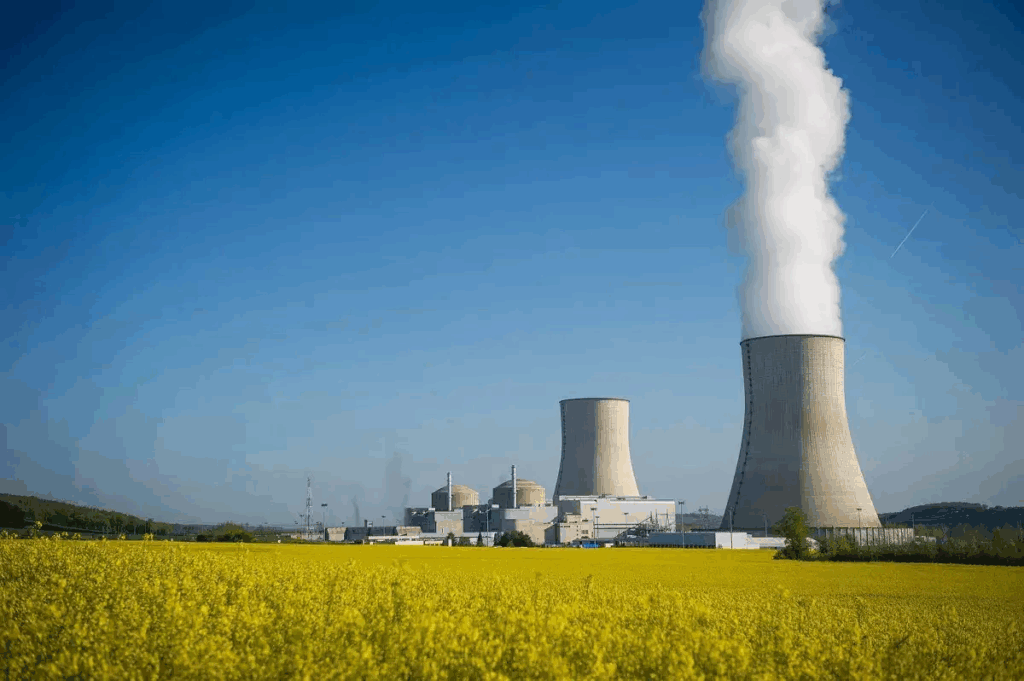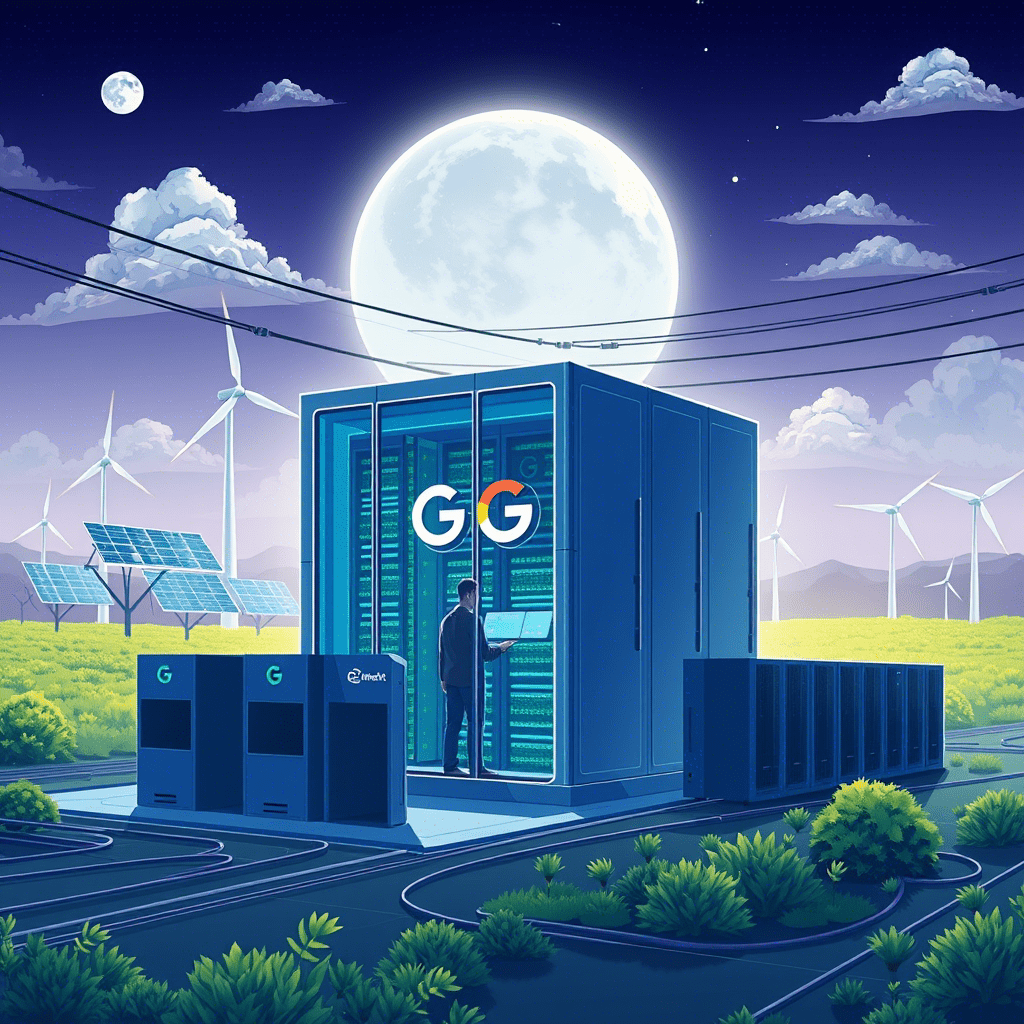A New Era in Clean Energy for Tech Giants
As artificial intelligence becomes increasingly central to Google’s business strategy, so too does the demand for electricity. In 2025 alone, Google plans to invest $75 billion in expanding its global data center infrastructure — an amount that rivals the GDP of small nations. To meet this growing need sustainably, the company is turning to advanced nuclear power, a promising but still-developing sector that could provide the constant, emissions-free power necessary to support AI operations without compromising climate goals.
This week, Google announced a groundbreaking partnership with Elementl Power, a newly launched nuclear development firm backed by Energy Impact Partners, a major climate-focused venture capital firm. The collaboration aims to build three separate nuclear sites, each delivering at least 600 megawatts (MW) of electricity. These facilities will be connected to the grid, with “commercial off-take” agreements allowing Google to directly purchase the power generated — effectively creating a new model for how large-scale tech companies can integrate clean energy into their operations.
The Role of Small Modular Reactors (SMRs)
Unlike traditional nuclear plants, which are massive, expensive, and time-consuming to construct, small modular reactors (SMRs) offer a more flexible and scalable solution. SMRs typically generate up to 300 MW per unit, making them ideal for deployment near high-demand areas such as data centers, urban hubs, or industrial parks.
Elementl Power is taking a technology-agnostic approach, meaning it hasn’t yet selected a specific SMR vendor. However, Kairos Power, which already has a prior agreement with Google, is considered a strong contender. Kairos’ demonstration plant is expected to produce 50 MW, scaling up to 150 MW per commercial facility, split between two reactors.
Despite the promise of SMRs, no commercial unit has been completed outside of China, highlighting both the opportunity and the challenge ahead. NuScale Power, one of the most prominent U.S.-based SMR developers, faced a major setback in 2023 when its lead utility partner canceled a contract after costs nearly doubled. Still, the potential benefits — including lower construction risk, factory-based assembly, and reduced environmental impact — make SMRs a compelling option for future energy planning.
Why Google Needs Nuclear Now
Google has long committed to operating on 24/7 carbon-free energy by 2030, a more ambitious target than simply matching annual energy use with renewable purchases. This means every kilowatt-hour used must come from a zero-emissions source at the exact time it’s consumed. While solar and wind are essential components of this vision, they are inherently intermittent — unable to provide consistent power during cloudy days, nighttime, or periods of low wind.
Nuclear power offers a stable baseload alternative, capable of running continuously regardless of weather conditions. By investing in nuclear, Google is not only hedging against energy volatility but also helping to de-risk early-stage technologies that may become critical to decarbonizing the global economy.
Moreover, placing nuclear reactors near data centers reduces transmission losses and enhances grid resilience. As AI models grow ever more complex, the demand for localized, high-density, and ultra-reliable power sources will only increase.

Ecological and Climate Implications
The ecological significance of this partnership cannot be overstated. Data centers currently account for about 1% of global electricity consumption, and that figure is expected to rise dramatically as AI adoption accelerates. If powered by fossil fuels, this growth would exacerbate greenhouse gas emissions and undermine global climate targets.
By contrast, nuclear energy emits no carbon dioxide during operation, and its lifecycle emissions are comparable to those of wind and solar. It also requires far less land area than renewables to produce the same amount of energy, minimizing habitat disruption and land-use conflicts.
Furthermore, next-generation nuclear designs — such as those being developed by Kairos Power — incorporate passive safety systems, non-water-based cooling, and improved waste management protocols. These innovations address many of the concerns historically associated with nuclear power, making it a more viable and sustainable option for the 21st century.
Broader Industry Trends and Competition
Silicon Valley is increasingly embracing nuclear energy as part of a diversified clean energy portfolio. Other tech companies have also signed agreements with SMR startups:
- Microsoft has deals with Oklo, a U.S. SMR developer aiming to deploy microreactors.
- X-Energy is developing SMRs with dual-purpose capabilities — electricity generation and industrial heat production — and has attracted interest from multiple enterprise clients.
- Helion Energy, though focused on fusion rather than fission, recently secured backing from OpenAI and other investors seeking breakthroughs in clean power.
These partnerships reflect a broader shift in the tech industry: moving beyond simple renewable procurement toward direct involvement in the development of new energy technologies. Companies are no longer content to be passive consumers of electricity; they want to shape the energy systems of the future.
Challenges Ahead
Despite the promise of SMRs, several hurdles remain:
- Regulatory complexity: Licensing and permitting processes in the U.S. are slow and costly.
- Public perception: Many communities remain wary of nuclear due to historical accidents and waste concerns.
- Cost predictability: While SMRs aim to reduce capital expenses through modularity, early projects like NuScale’s Idaho plant have seen significant budget overruns.
Still, with corporate giants like Google stepping in to provide financial backing and offtake guarantees, the prospects for SMRs are improving. Their ability to deliver clean, compact, and continuous power makes them an attractive fit for a world increasingly dependent on digital infrastructure.
In Short: A Fusion of Innovation and Responsibility
Google’s partnership with Elementl Power represents more than just a strategic energy investment — it’s a statement of intent. As AI reshapes the technological landscape, the companies leading this transformation are recognizing the urgent need to align innovation with sustainability.
By betting on advanced nuclear power, Google is helping to accelerate the transition to a post-carbon energy system, where data centers run cleanly, grids operate reliably, and climate commitments are met with real-world action. This initiative sets a powerful precedent for others in the tech sector and beyond, showing that the path to a sustainable future may well pass through the reactor core.
Related Content
- Google inks deal to develop 1.8 GW of advanced nuclear power | TechCrunch
- The Dawn of Android XR Glasses: Google and Samsung Lead the Way in Augmented Reality Innovation
- Google Launches Free Gemini-Powered Data Science Agent on Its Colab Python Platform
- Google’s Willow: A Leap Forward in Quantum Computing with Profound Ecological Implications
- Google Signs World’s First Corporate Agreement for Kairos Power Nuclear Energy: A Groundbreaking Move Toward Clean Energy
- Unleashing Gemini: A Deep Dive into Google’s Revolutionary AI Model
- Google’s Gemini Announcement Under Scrutiny: AI Demo Raises Concerns Over Transparency and Real-Time Capabilities
- Geneva’s Homes to Be Heated by Recycled Energy from Revolutionary Swiss Data Centre
- Big Data Demystified: Turning Complex Data into Clear Insights for Strategic Growth
- Advanced Data Visualization Techniques for Business Intelligence
- AI, Cybersecurity, and Sustainability
- A Week in Tech: AI, Cybersecurity, and Sustainability
- 5G and Sustainability: A Green Leap Forward or Environmental Challenge?
- Google and Elementl Power are collaborating to advance nuclear energy site development.
- Google and Elementl partner on 1.8 GW nuclear project
- Google to Back Three New Advanced Nuclear Projects – ESG Today

